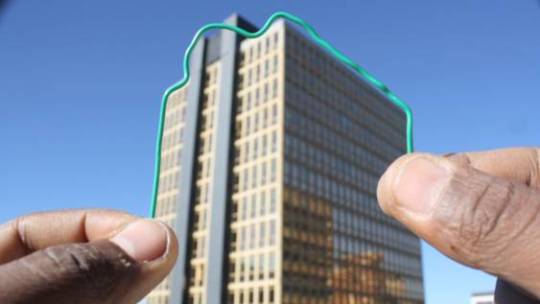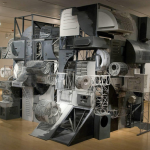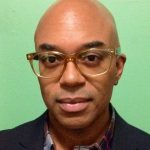FEATURED ARTIST: EZRA WUBE
New Feature from the Con Edison Immigrant Artist Newsletter No. 68
In this month’s issue, we highlighted mixed media artist Ezra Wube, an alumni of NYFA’s Immigrant Artist Mentoring Program in 2013. Ezra recently launched and founded the Addis Video Art Festival, taking place in Addis Ababa, Ethiopia, Ezra’s country of origin. We talked with Ezra to find out more about this new initiative, how it relates to his work and balancing the dual roles of being artist and organizer. Submissions for the Video Art Festival are open now through August 1, 2015.
NYFA: Can you describe the journey of artist to founder of Addis Video
Art Festival in your home country Ethiopia? What inspired you to take
the leap from practicing artist to artist as organizer of a significant
sized project? What are you noticing about the difference so far, if
any?
EW: A few years back an artist friend suggested I screen one of my
animations in Addis Ababa, at a place called Meskel Adebabay. It is a
big open space where most of the city’s gatherings and events occur.
They had recently installed a huge electronic screen to show movies,
major soccer games, commercials for businesses, and special programs
during holidays. I then learned that I could rent a time slot to screen
my videos, and it was actually very affordable. I rented the screen and
screened one of my short animations. It was thrilling. Most of my work
is inspired by the everyday urban experience. It was incredible to view
my work in this context, paralleling imagination with the everyday.
Years later, after screening my own work in festivals of various
countries; I began to think about how Ethiopia didn’t have any video art
festivals. I believed the objectlessness of the medium would enable me
to organize one for a low cost. I contacted friends and colleagues that I
have known over the years and asked if they were interested in
collaborating on the project. They responded with kindness and great
will. In Ethiopia there are only a few video artists, probably less than
10, and we hope the festival will inspire more artists to take on the
medium.
It is amazing to put forward an idea and witness how others respond to
it. We have already received strong submissions, echoing the concept
from many corners of the world.
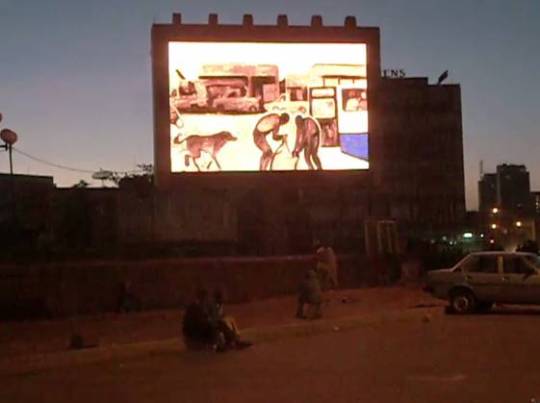
NYFA: The theme of the festival “New Home” seems to relate to your own work
through your investigation into the “constant changing of place, and the
dialogical tension between “here” and “there”.” Is there a connection
to your art practice, if so, can you describe that relationship?
EW: I grew up in Addis Ababa Ethiopia and moved to the US at the age of 18.
Having two homes, I wanted a means to reconcile these two belongings.
For one who migrates, time and place are not singular. You are never
fully part of the present or the past, you are in an in-between space.
In my work I strive to embrace my past and my present. The challenge
lies in geographical distance and changes in time. I feel like through
digital video one can transcend these limitations, and can be present in
multiple places at the same time.
Initially I was considering an open theme for the festival, but one of
the team members, Sarah Workneh, suggested we have a concept that is
relevant to the city. I travel back and forth every year or so and I
thought about the current conditions in the city. Addis Ababa is in the
midst of massive transformation. It is expanding drastically, over a
quarter of its current residents relocating to new neighborhoods. Old
communities are disappearing and new ones are forming. In our mobile
generation, I felt the theme “New home” would resonate with the current
state of the city as well as speak to most parts of the world.
NYFA: Tell us more about the host city Addis Ababa. It seems you are looking
to create a very interactive dialogue with the choice of locations. Is
the current expansion and movement within the city creating a
stimulating and supportive environment for you to do this now, rather
than before?
EW: Yes it is true that the current condition of the city is what brought
forward this project idea. In 2010, after finishing my graduate studies,
I went to Ethiopia to start an artist residency program that could
facilitate an exchange between Ethiopian and international artists. With
the help of friends, I presented the idea to the city. It was abstract
for the officials at first since it was not a school or a business but
eventually they accepted the project. I was designated land on the
outskirts of Addis Ababa, surrounded by hills and a river. I couldn’t
believe it was happening. I planted trees all around it, and even planed
to have a free range donkey (since donkeys work very hard in Ethiopia).
I then went back to the US for my wife’s graduate studies. After about 6
months a friend called me to tell me that the government took back the
land since they would be running an electric power line through it. I
waited for years hoping they would offer me another location. The
regions officials had changed which meant I had to reapply, now with
stricter rules.
All I had wanted was to create a dialogue. The ideas, not a specific
place, are all that matter. True to the state of the city and my own art
practice as well, the objectlessness of the digital video medium
enables an exchange without a consistent place. The festival will
nomadically present itself, juxtaposing the videos with the city in
action. It will screen throughout the city in a variety of locations
including street corners, rooftops, public centers and art centers. By
sharing video art in both conventional and non-conventional settings, we
aim to reach both the artists community and the everyday passerby.
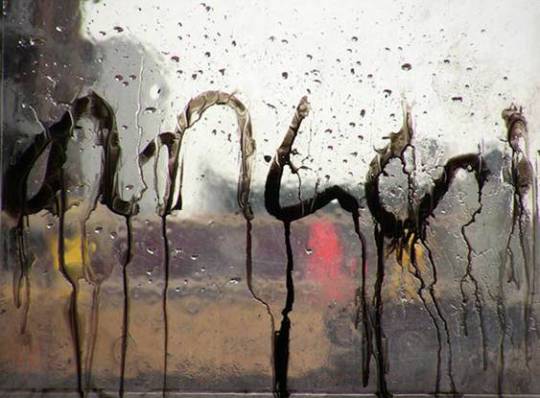
NYFA: NYFA has just released its call for the Immigrant Artist
Mentoring Program, which you participated in (2013). What has resonated
for you from your experience that would be important for potential
applicants to know about?
EW: I was very fortunate to be selected and awarded the NYFA Immigrant
Artist Mentoring Program. I had a wonderful mentor who guided me and
took as much time as I needed to go over my work descriptions and artist
statement. A career as an artist is a continuously evolving practice.
Since my graduate studies my writing had been frozen, until I revisited
it through the NYFA program. For artists it is an incredible chance to
present the questions they have and to develop themselves with guidance
from those more experienced in the field. It is also a means to connect
with and relate to an international art community.
NYFA: You just released your open call for Addis Video Art Festival.
What kind of submissions are you and the team envisioning? How do
artists submit their works?
EW: Addis Video Art Festival seeks work that explores and interprets the
complex idea of “New Home” whether it be an external literal physical
home, an internal psychological home or a cyber-home. Here’s the link
for submission information: http://addisvideoartfestival.net/submit.htm
To find out more about the Addis Video Art Festival, click here. Deadline is August 1, 2015. To learn more about Ezra Wube’s artwork visit his website or come to see Ezra’s video Indamora at NYFA’s exhibition Face to Place, which is on view through May 8. The exhibit highlights select participants of NYFA’s Immigrant Artist Mentoring Program, from its inaugural year in 2007 through 2014. Applications are currently open for the mentoring program with a deadline of May 26.
This interview was featured in Issue No. 68 of the Con Edison Immigrant Artist Newsletter. Are you currently receiving this free newsletter? Sign up to receive the monthly email featuring artist interviews, special reports, and upcoming arts deadlines and professional development resources.
Images, from top: Ezra Wube, Mela, stop-action animation, 1 min : 41 sec, 2011; Ezra Wube, Screening animation at Meskel Adebabay, 2011;Ezra Wube, Indamora, stop action animation, ink on glass, 2 min: 40 sec, 2009.

